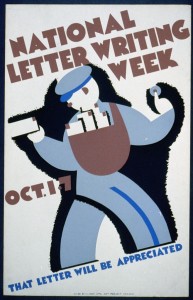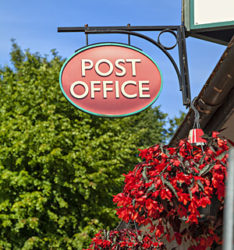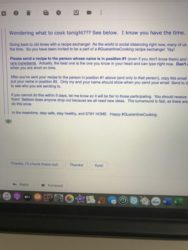
The use of first class mail has been declining for two decades or longer. As both business and personal transactions increasingly take place on the Internet, including bill paying, marketing, retail sales, appointment bookings and more, the way we correspond with one another has changed accordingly. Have email letters replaced the personal letters we once wrote by hand or typed and sent through the mail?
According to Teddy Wayne, writing for the New York Times, the answer is “no.” Long email letters, apparently, are now also a thing of the past. Wayne reports “business users now send and receive an average of 122 (email) messages per day, up from 110 in 2010.” He posits that we are simply too exhausted from all of this correspondence to take the time to craft lengthy, personal email letters.
The Internet seems to have not only largely replaced the postal service in mail delivery, but has also dramatically changed how we write. In today’s world, people anticipate immediate, or at least timely, responses to email letters. I have found that when I don’t respond to an email letter within the week, the correspondent sometimes will write to make sure that I have received their message.
This is not surprising, given the volume of email passing through the Internet. If one receives a hundred or more emails each day, self-preservation would dictate that one must respond, flag, delete or otherwise clean out that in-box as quickly as possible. Even when a communication does not require an immediate response, there is a danger that it will become buried under mountains of new mail and then forgotten.
For personal friends and family who are seen on a regular basis, abbreviated forms of communication are more practical for busy lives. A quick email, or voice or text message, works just fine for firming up meeting plans, announcing that one is running late, and other quick exchanges. For distantly located friends and family, a phone call, once prohibitively expensive, has commonly replaced the written letter as the primary means of staying in touch.
Social media also meets many of our communication needs, allowing for dialogue and photo sharing with friends, colleagues, acquaintances and family. Re-posting links from other sites can reinforce and clarify shared values, such as concern for the environment, politics, entertainment or love of music. (I personally fall for most cute animal videos – dogs, cats, animals in wildlife sanctuaries, cross-species friendships, and more.)
The increased brevity of our communications is reflected in April’s National Card and Letter Writing Month, sponsored by the U.S. Postal Service, which has replaced National Letter Writing Month. Go to any card or stationery store and one is hard-pressed to find actual stationery. For most hand-written communications, a note on a card allows a personal touch without requiring one to write a lengthy tome. It also is a joy to find such a missive in the mailbox!
This is not to be confused with National Letter Writing Week, which is confusing enough by itself. In the U.K., National Letter Writing Week, which launched in 2015, occurs in September. In the U.S., National Letter Writing may occur the second week of January.
According to the Letter Writers Alliance (NWA), National Letter Writing Week occurs every January 8 – 14. But there is a disclaimer. “LWA members know that letter writing week is EVERY WEEK, but let’s join in the fun, shall we?” The Examiner newspapers seem to agree with this date. “Universal Letter-Writing Week is observed each year from January 8-14,” intoned The Ex on January 5, 2013.
The Library of Congress, on the other hand, supports evidence that National Letter Writing Week occurs October 1-7. It even has a Works Progress Administration poster, first published in 1940, to prove it, featuring “a mail carrier holding a letter.”
The fact that there are so many days within the calendar year celebrating the art of letter writing may speak well to the future of letter writing. In keeping with the Letter Writers Alliance – let us write a letter every week! But if that is not feasible, let’s go with October 1 – 7, at least until January 8. And if the “Long Email Signs Off,” let’s stick with that which is vastly out of style: the tangible, handwritten letter, which is both an art form and a permanent record.
Sources
Hone Your Correspondence Skills During Universal Letter Writing Week by Meghan Ross. The Examiner, Jan. 5, 2013.
Future Tense: The Long Email Signs Off, by Teddy Wayne. New York Times, July 12, 2015




